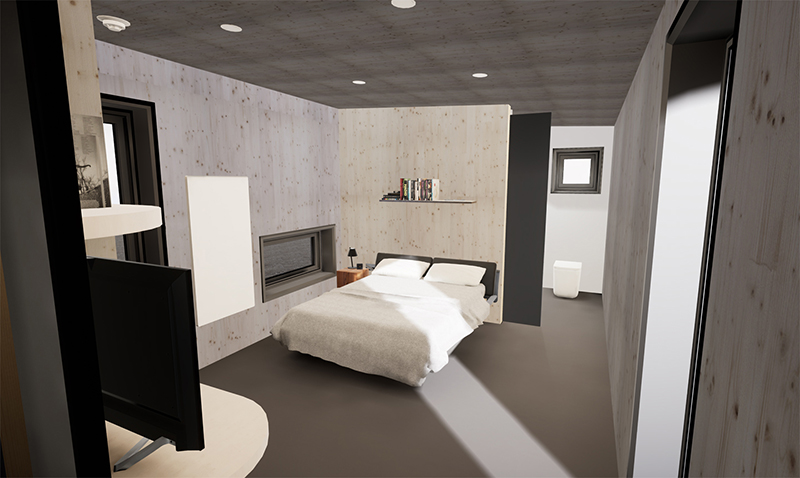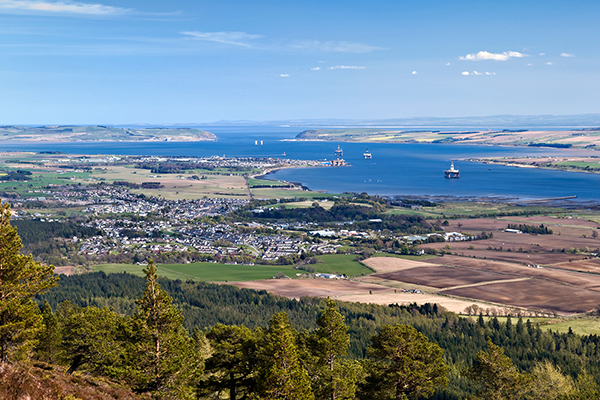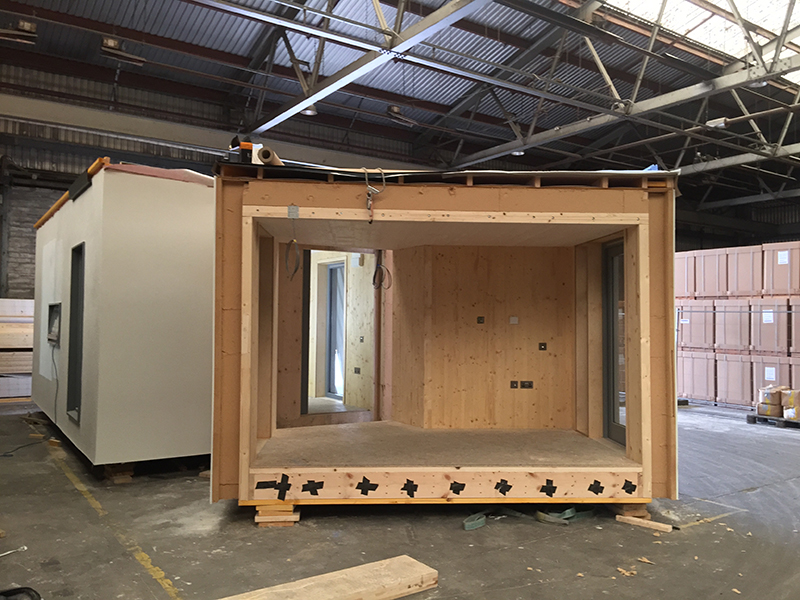You are viewing 1 of your 1 free articles
Housing the Highlands
A new plan seeks to transform the Scottish Highlands into a digital playground with a new, high-tech housing offer. Martin Hilditch finds out more
Tucked away in the top corner of the UK, the Scottish Highlands has typically sold itself as being “the Scotland of your imagination” – a land of “majestic mountains and mysterious lochs”.
While Ben Nevis and Loch Ness may capture the public’s imagination, the region is currently seeking to add another string to its marketing bow. As well as being seen as Scotland’s “natural playground”, moves are afoot to turn it into a technological adventure park, too – or a “region of digital opportunity”, to use the official lingo.
Last year The Highland Council signed a £315m City-Region Deal with the Scottish Government and the UK government (£188m government investment and £127m investment from the council, Highlands and Islands Enterprise (HIE), the University of the Highlands and Islands, and Albyn Housing Society).
Broadly, the aim of the deal is to invest money in projects designed to help the growth of Inverness and the Highlands, creating more than 3,000 jobs over the next two decades and unlocking a further £800m in private money.
Right at the heart of this, however, is a single ambition – to turn the Highlands into “the best digitally connected rural region in Europe”. In turn, that means transforming the region’s housing offer.
Today, Inside Housing is in town to find out what these ambitious plans, which target both older residents and young people, will mean in practice – and what learning might emerge as the region attempts to create some of the most innovative housing in the UK.
Investigating the housing plans for older people takes you to possibly the world’s most scenic industrial estate, surrounded by fields and a stone’s throw from the waters of the Cromarty Firth (see main image).
The work that is being carried out in this picture postcard corner of the Highlands forms a core part of the City-Region Deal’s central housing offer – to develop clusters of innovative assisted living schemes. Boiled down to its most basic, the aim is to have homes that “monitor the individual” and contain sensors linked to remote health and care providers.
So far this might not sound revolutionary. Ambitions run much higher than this, however. Ultimately, the goal is to create homes that feed data in to healthcare professionals, who can then start to monitor trends and tailor their approach accordingly.
Adaptable housing
Matt Stevenson, managing director of modular house builder Carbon Dynamic, which is based at the Cromarty Firth Industrial Park, is currently working on a project called Fit Home – a collaboration with Albyn Housing and NHS Highland. For starters, this involves working with users and care professionals to design homes – 47 are planned in total – that can adapt to meet the changing needs of residents. But the most intriguing part of the project involves work to use artificial intelligence-based predictive analytics to start improving health outcomes for residents.
“The tech is built into the units,” Mr Stevenson enthuses. These are early days and details are still being finalised, but ideally Mr Stevenson wants the homes to have technology that will be able to “monitor where you are within the footprint of the building”.
“With that you are starting to build a profile of the usage of the home over time. Then you can start to see trends, [for example] if someone has become less active [or has started making] lots more trips to the loo. You can start to use the data for predictive analytics.”
The project is working with Susan Craw, professor of artificial intelligence from Robert Gordon University, and is using £100,000 from the Data Lab to develop the approach. The initial focus is on using the analytics to start to predict “the likelihood of someone having a fall” based on their behaviour in the home.
“We have targeted that as our starting point because it is the biggest impact NHS-wise,” Mr Stevenson says. Ultimately, the specific goal of the City-Region Deal is to help older people “live in their communities and avoid the need for them to be sent to hospitals and/or care homes”.
There are other linked ambitions. One involves developing a new housing offer in the region.
Allan Maguire, head of property partnerships at The Highland Council, says this is another important goal. “We wanted to see if you could do modular housing in the Highlands,” he states. “We did do an offsite fabrication scheme about 10 years ago. But the difficulty is that you have to try and get the numbers up to make the economies of scale. That is what we are trying to do at the moment through Fit Homes.”
“We are trying to change the perception of developers.”
Allan Maguire, head of property partnerships, The Highland Council
It is also running a separate pilot project to build modular extensions to the homes of older or disabled people to help them remain in their properties (see pictures below). As Inside Housing reported in April, this involved Carbon Dynamic building a modular extension that can be attached to multiple homes. It would be joined to existing homes where, for example, the occupier becomes unable to access upstairs bedrooms or bathrooms. It can then be moved if the resident’s needs change or they die. Mr Maguire says this ability to reuse the modules means they represent a saving compared to other options, such as relocating people.
A pilot project run by The Highland Council builds modular extensions to the homes of older and disabled people
The modular extensions can be attached to multiple homes and moved when the occupier’s needs change
The City-Region Deal is also clear that it will target an increase in affordable housing for young people, stating that this “has been identified by employers as a major constraint in their efforts to grow their business”.
While innovative housing for the older population may save on hospital bills and prolong life, getting the offer right for young people is about the survival of the region. While the population of the Highlands has been on the rise (jumping from 192,000 people in 1981 to 232,910 in 2012), the percentage aged 16 to 44 has fallen from 40% to 33% in the same period. The overall trend is at risk of going into reverse unless new residents can be enticed in. A 2015 housing need and demand assessment by The Highland Council predicted around 700 more deaths than births by 2036/37.
“Highland is therefore dependent on inward migration for population growth and without positive inward migration we will see the population begin to decline at an increasing rate,” the assessment concludes.

The solution proposed in the City-Region Deal is the creation – in partnership with the Scottish Government, the private sector, and housing associations – of a recyclable loan fund to invest in the infrastructure required to open up large strategic sites for jobs and homes. The council will also take part in the National Housing Trust scheme to create homes targeted at young people and available at mid-market rent.
Boosting the market
According to John Robertson, programme manager for the Inverness and Highland City-Region Deal with The Highland Council, the plans might be about economic growth but “it is also about rebalancing the population”.
“It is the 16 to 30-year-olds who tend to move away,” Mr Maguire says. “There is net [outward] migration of 16 to 30-year-olds. A lot of the city deal is to try and make the area as attractive as possible to them.”
“Housing is fundamental to creating the right environment for growth.”
Stuart Black, director of development and infrastructure, The Highland Council
A survey of 4,409 young people by HIE in 2015 saw them list housing as their third highest priority (after jobs and career progression) for making the Highlands and Islands more attractive to live in. Ninety-three per cent described good access to housing as being critical to attracting them to live, work and study in the region.
“Housing is fundamental to creating the right environment for growth,” says Stuart Black, director of development and infrastructure at The Highland Council.
A whistle-stop tour of Inverness with Mr Black and Mr Maguire reveals much work is already under way. A new road to the south of the city “will open up land for about 1,000 new homes”, according to Mr Maguire. Again, the council is intervening to kick-start housing markets, with a development of flats in the city centre aiming to provide a new offer for young people looking to live centrally.
“There is very little appetite for the private sector to do flatted development [currently],” Mr Maguire states. “We are trying to show them there is a market. We are trying to change the perception of developers.”
It is still early days for the City-Region Deal, but its ambition is clear. The deal will pump investment into new technology and different ways of working, slowly transforming the region’s housing offer. Loch Ness’ mysterious depths will continue to draw in the visitors, but if the partners in the City-Region Deal have got their plans right, increasing numbers of them will choose to stick around.











